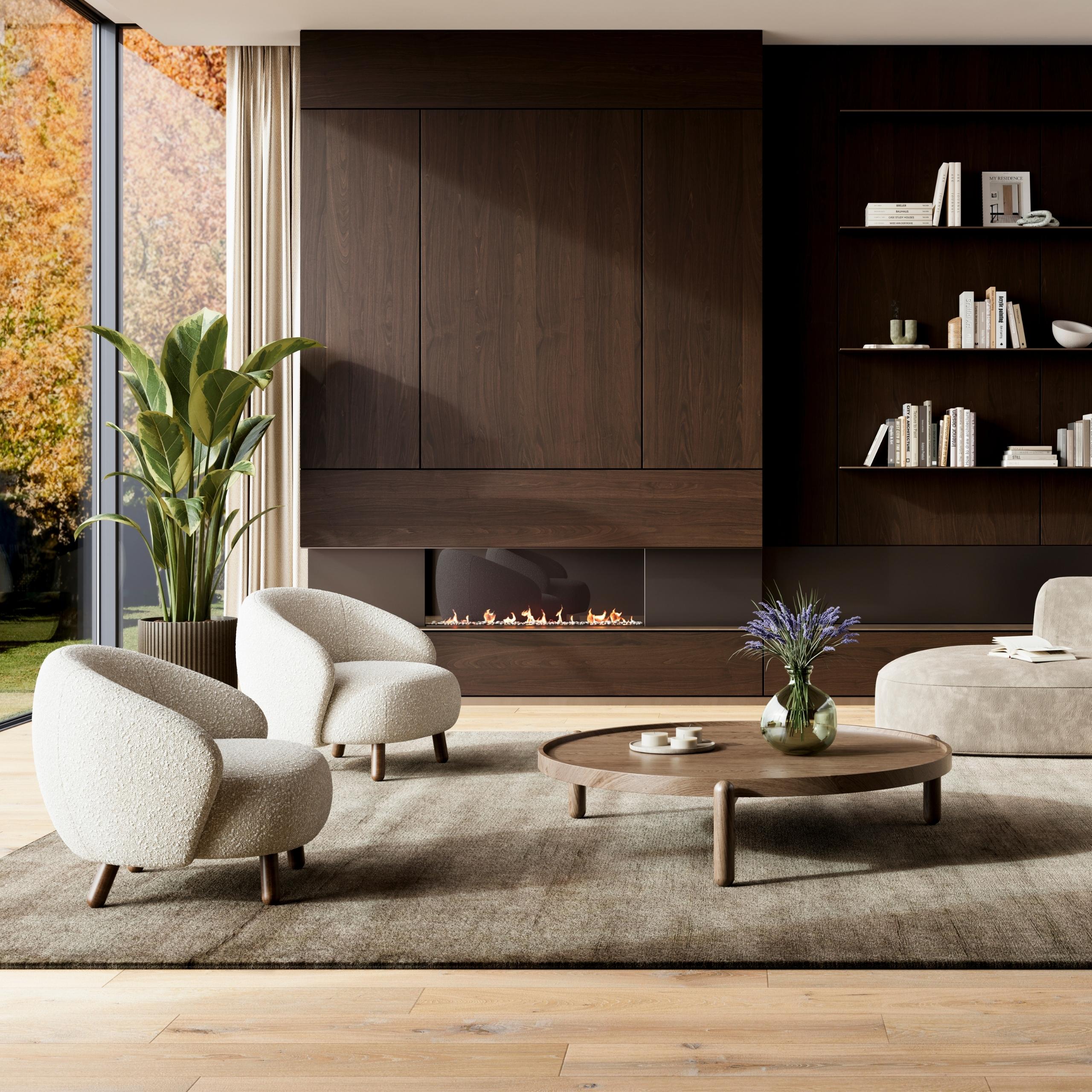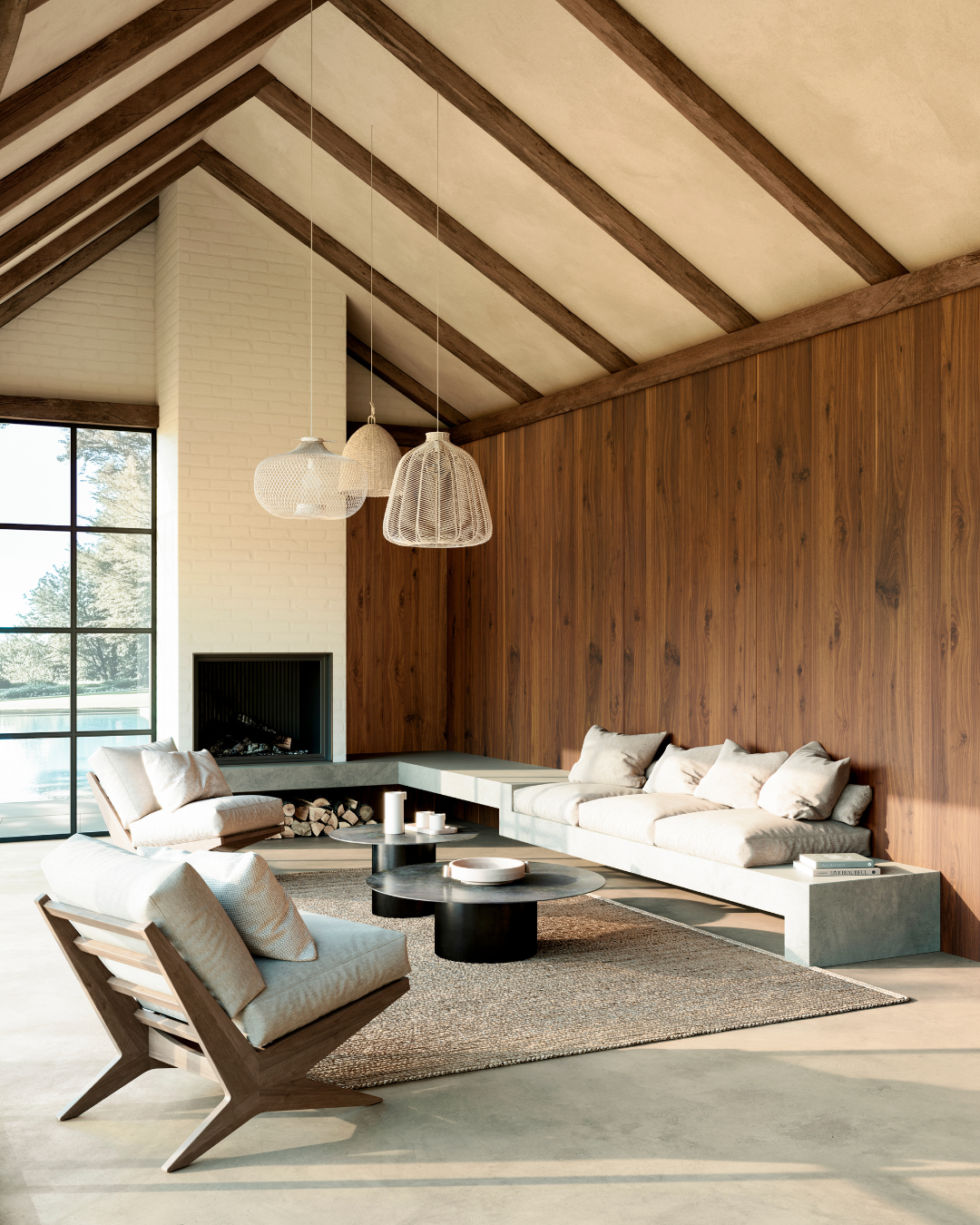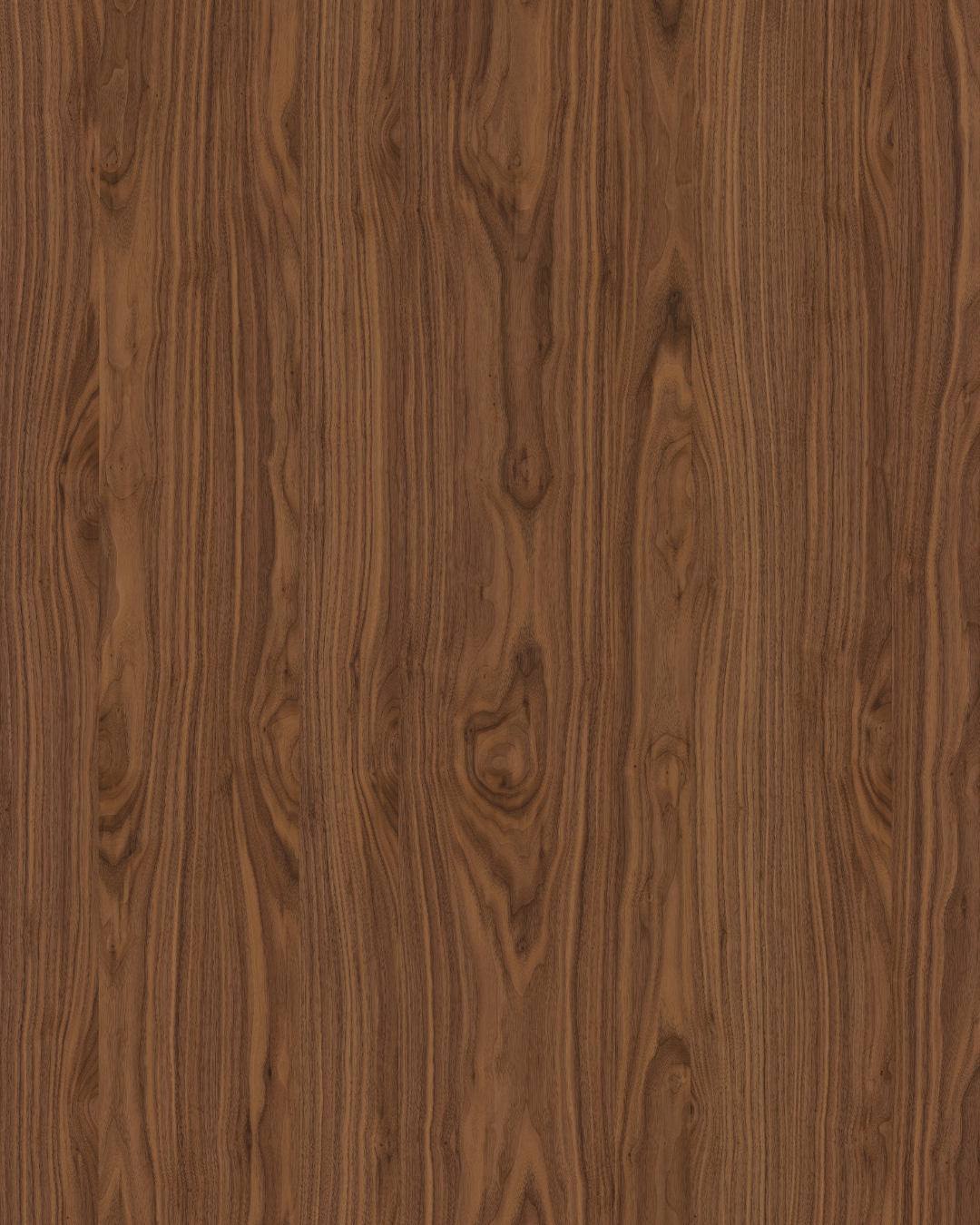- tag
Warum Holz
- date
18 February 2025
- collection
Nuxe

American walnut: what makes it such a standout in the world of interiors?
Whether you have admired it in a sleek modern kitchen or the ornate furniture of yesteryear, there is no denying its timeless appeal. This wood isn’t just a material. It’s a story of natural beauty, craftsmanship, and versatility.
If you have ever wondered why American walnut has captured the hearts of designers and craftsmen for centuries, you are in the right place. Let’s explore four key things that make it so special.
Let’s start at the beginning. American Walnut is known scientifically as Juglans nigra, the tree is native to the eastern and central United States. If you have ever strolled through a forest or along a riverbank in these regions, there’s a good chance you have walked past one.
These trees love rich, well-drained soil and thrive in areas with mild climates. They grow especially well in moist environments, which is why they are often found near streams or in fertile forests. It’s here, in these ideal conditions, that the American walnut tree develops the beautiful, durable wood it’s so famous for.
But what’s the big deal about the wood itself? For starters, it’s stunning.
American walnut has a deep chocolate-brown colour that is both warm and rich. Some pieces feature lighter streaks that add a touch of character, while others have a wavy or swirling grain that makes each board feel like a one-of-a-kind masterpiece.
And it’s not just about looks. The wood is strong and reliable, making it a favourite for furniture makers and designers alike. But there is more to walnut’s story than just its origins. Let’s dig a bit deeper.

American walnut has been used for centuries, and it’s not hard to see why. Long before European settlers arrived in North America, Native Americans had already discovered its many uses. They crafted tools, weapons, and even dyes from the bark and nuts of the walnut tree. The wood itself was known for its toughness and reliability. Qualities that made it invaluable.
When European settlers arrived, they quickly recognised walnut’s potential. By the 17th century, walnut had become a sought-after material for furniture making. Its strength, combined with its fine grain, made it ideal for crafting intricate designs.
By the 18th and 19th centuries, American walnut had becomea symbol of luxury and craftsmanship. Furniture makers in both Europe and America prized it for its beauty and durability. During the Victorian era, owning walnut furniture was a sign of wealth and sophistication. Grand dining tables, elaborate headboards and ornate cabinets made from walnut were designed to impress.
By the 20th century, it was a staple in homes across the world, and its reputation for quality and style has endured ever since.

You might be thinking, “Sure, walnut has history, but does it still work in modern design?” The answer is a resounding yes. In fact, American walnut is more popular than ever, and it’s not hard to see why.
One of walnut’s greatest strengths is its versatility. Its deep, rich colour brings warmth to any space, making it an ideal choice for everything from cosy living rooms to sleek, modern kitchens. Whether you are designing a minimalist space or something more traditional, walnut has a way of fitting in perfectly.
Walnut is incredibly durable, which makes it a practical choice for high-traffic areas like floors and countertops. When expertly finished, it becomes resistant to scratches and dents, meaning it can handle the demands of everyday life without losing its charm.
Modern woodworking techniques have also opened up new possibilities for walnut. Today, it’s used in everything from wood veneers and inlays to mixed-material designs that pair it with glass, metal or stone. These innovative approaches allow designers to create stunning, contemporary pieces that still honour walnut’s classic appeal.

At Decospan, we’re passionate about bringing the beauty of American walnut into modern interiors. Our Nuxe Naturals and Signatures wood veneers are designed to celebrate everything that makes this wood special, offering a range of wood veneers that highlight its natural beauty.
The Nuxe collection is all about showcasing the unique character of walnut wood veneer. Think knots, colour variations and subtle characteristics that tell the tree’s story. These wood veneers are perfect for anyone who loves the organic beauty of wood and wants to bring a touch of nature into their home.
For those who prefer a more refined look, Nuxe also offers some more polished wood veneers that are more smooth and sophisticated. These wood veneers retain all the warmth and charm of walnut while offering a sleek, modern aesthetic.

So, why does American walnut continue to capture the hearts of wood enthusiasts? It’s simple. This wood is more than just a material.
It’s a story. The story of the Native Americans who first used it, the craftsmen who turned it into art and the designers who continue to find new ways to celebrate its beauty.